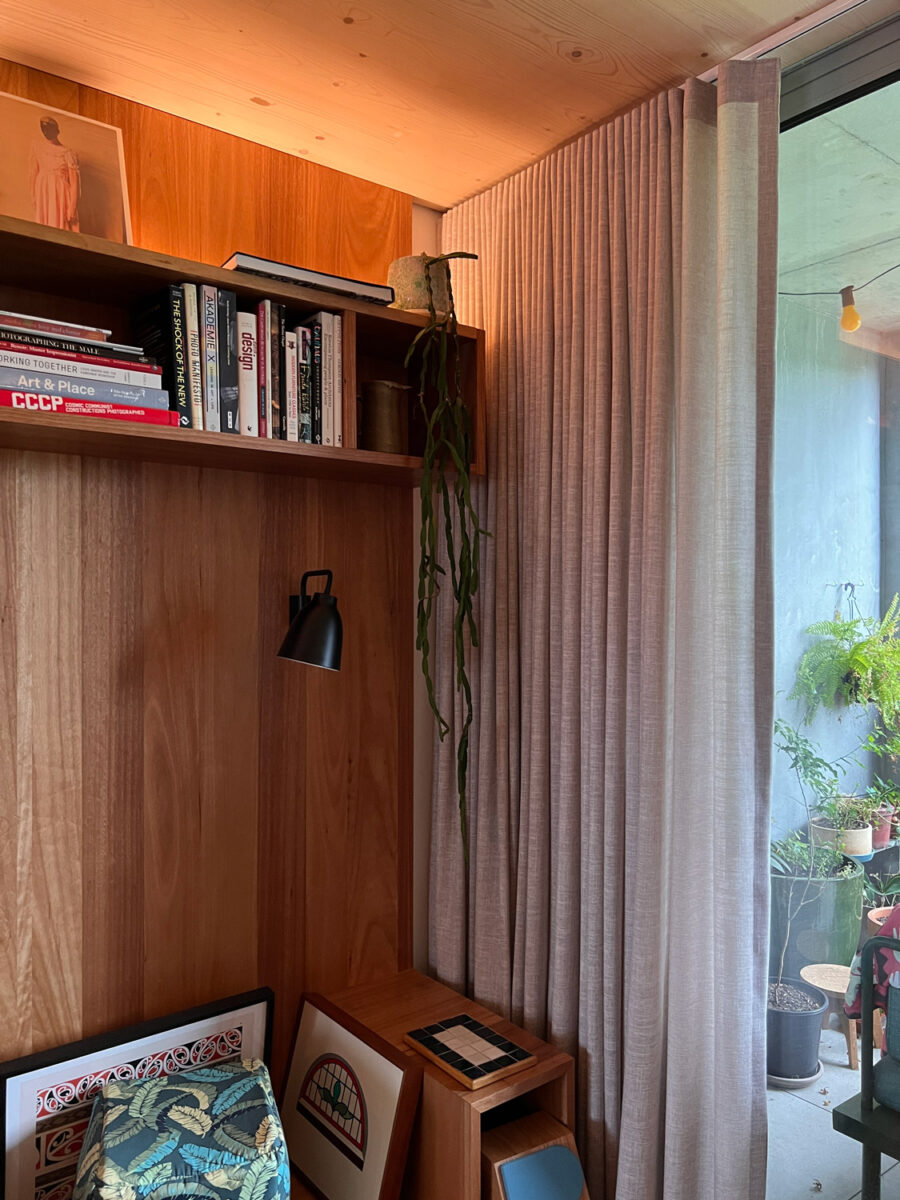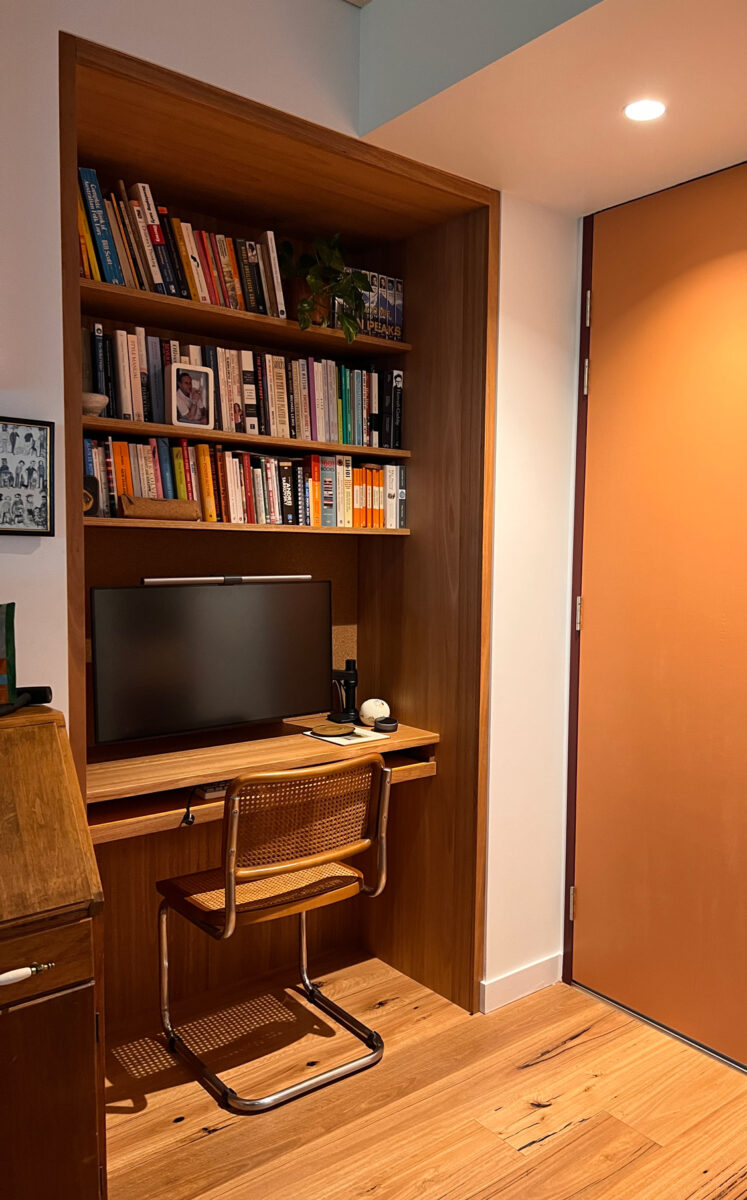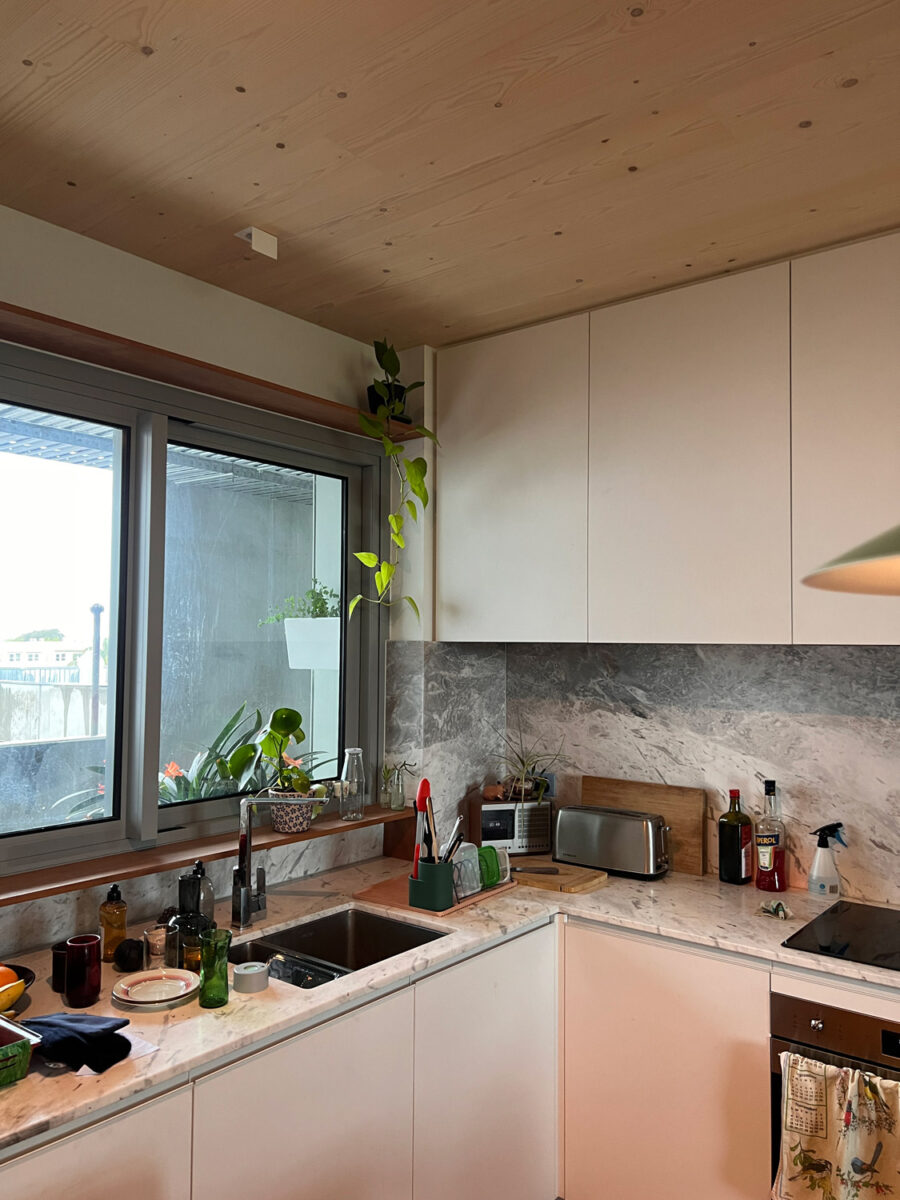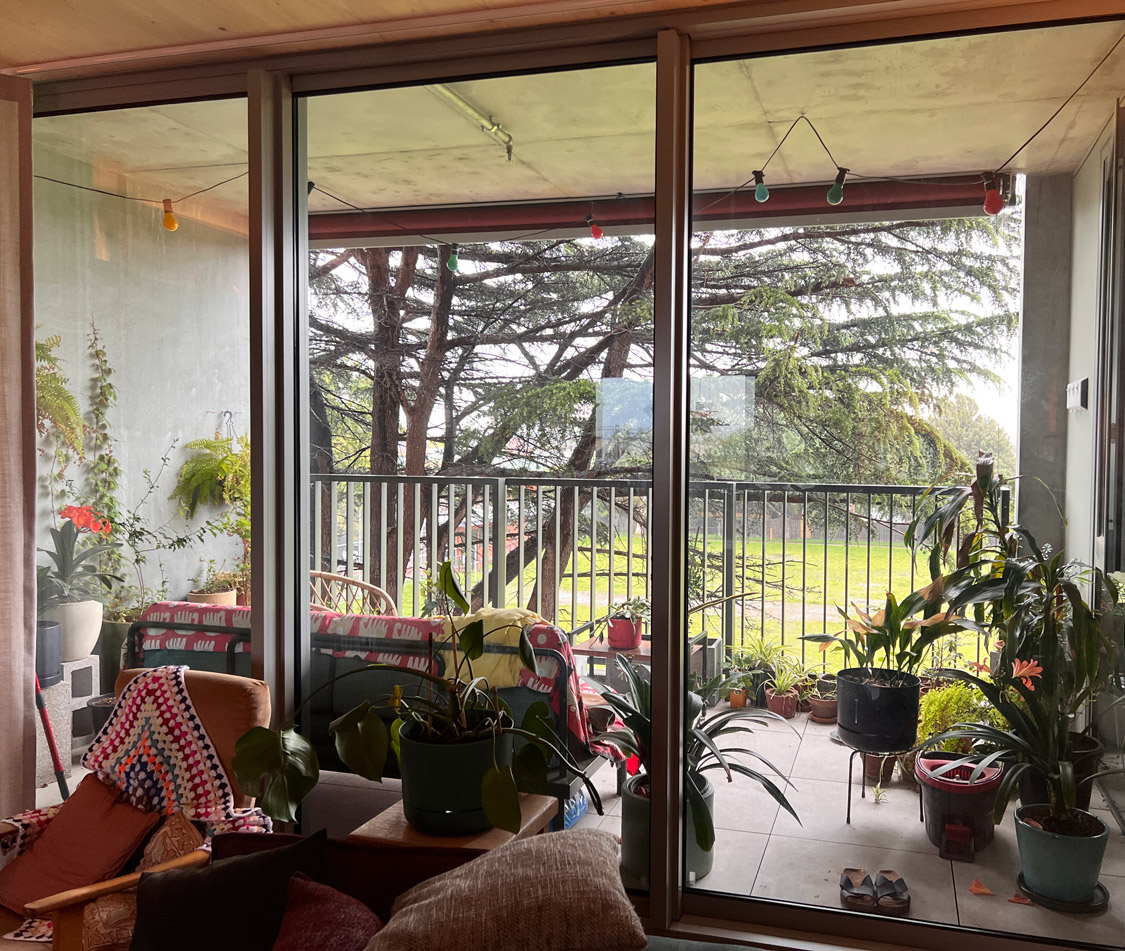Research Methods: Interviews in the Home
One of the key research aims for Living Together is to learn about the lived experience of collective housing, which are residential developments that rely on shared amenities and are built at a greater density than traditional detached suburban homes. The research asks whether the promises of collective housing and living closer together, with amenities like shared rooftop gardens and communal spaces, eventuate for residents?
To learn about lived experience, it is critical to consider the choice of research methods to ensure empathetic research. For this project, interviews were chosen as a research method because they are a reliable way to “produce conversational, emotional and empathetic research encounters” (Pink 2012, 41). Rebecca Roke, the lead researcher, chose a semi-structured interview format to offer a ‘window into worlds’ that allows participants to contribute observations or opinions as well as answering pre-set questions. She said, “Participants can paint a personal picture of their world and themselves – a quality that is considered especially appropriate when discussing their home environment.”
Interviews offer a ‘window into worlds’. People can paint a personal picture of their world and themselves – a quality that is especially appropriate when discussing their home environment.
Photos that illustrate a resident’s lived experience, taken during an interview for the Living Together project.
The ‘window into worlds’ approach of the interview was further encouraged by situating the interviews in the home. This allowed each person to speak to their lived experience while pointing out different elements of their home that affects their everyday experiences. Residents were asked about their views on what a project felt like to inhabit, whether it met or failed to meet their expectations, any key areas within the shared amenities that they felt were notably successful or unsuccessful, and why they held that opinion. Specific questions about home ownership and consumption were also asked to understand residents’ wealth or lack thereof and, by extension, if collective housing was unevenly occupied by an educated middle-class demographic as determined in other surveys of collective living (Jakobsen & Larsen, 2019).
A home and its inhabitants transform each other – Daniel Miller
Interviews that occur in the privacy of the home have the potential to feel intrusive, but they also allow the researcher to understand the ways in which “a home and its inhabitants transform each other” (Miller 2001, 2). The potential to capture and analyse the transformative action between residents and shared resources of collective housing underpins the research project and its potential findings. It acknowledges the importance of good design in facilitating ways of living together cooperatively and collectively, while sustaining a desired quality of life.
It is anticipated there will be interviews with 45 residents across 9 collective housing projects, with additional contextual interviews with architects and developers for each project. We are already learning so much from the interviews conducted and look forward to sharing some early insights with you soon.
—
References
Jakobsen, Peter, and Henrik Gutzon Larsen. 2019 “An Alternative for Whom? The Evolution and Socio-Economy of Danish Cohousing.” Urban Research and Practice 2(4): 414-430.
Miller, Daniel. 2001. Home Possessions: Material Culture behind Closed Doors. Oxford; New York: Berg.
Pink, Sarah. 2012. Situating Everyday Life Practices and Places. Los Angeles: SAGE.
Photos that illustrate a resident’s lived experience, taken during an interview for the Living Together project.



